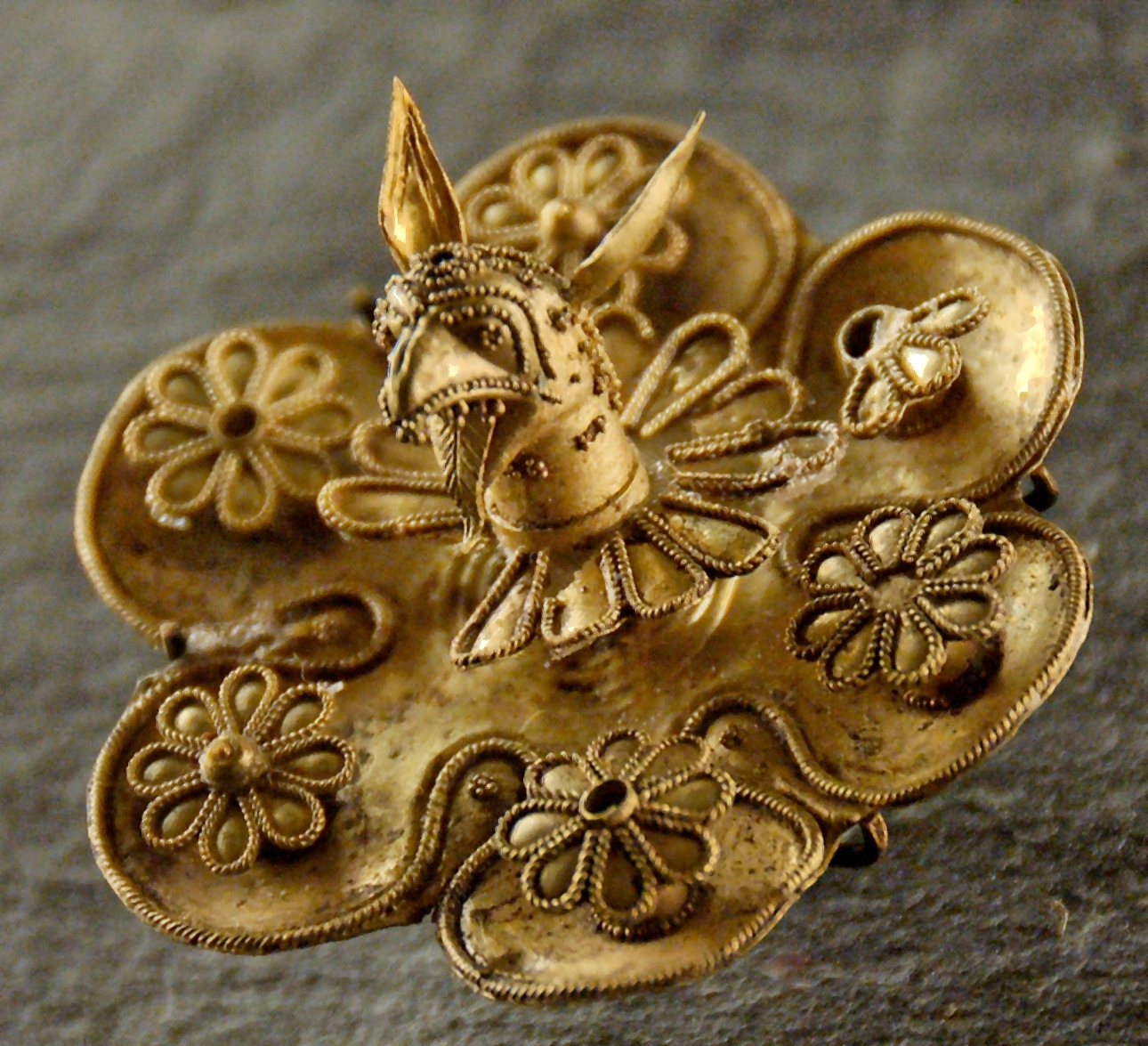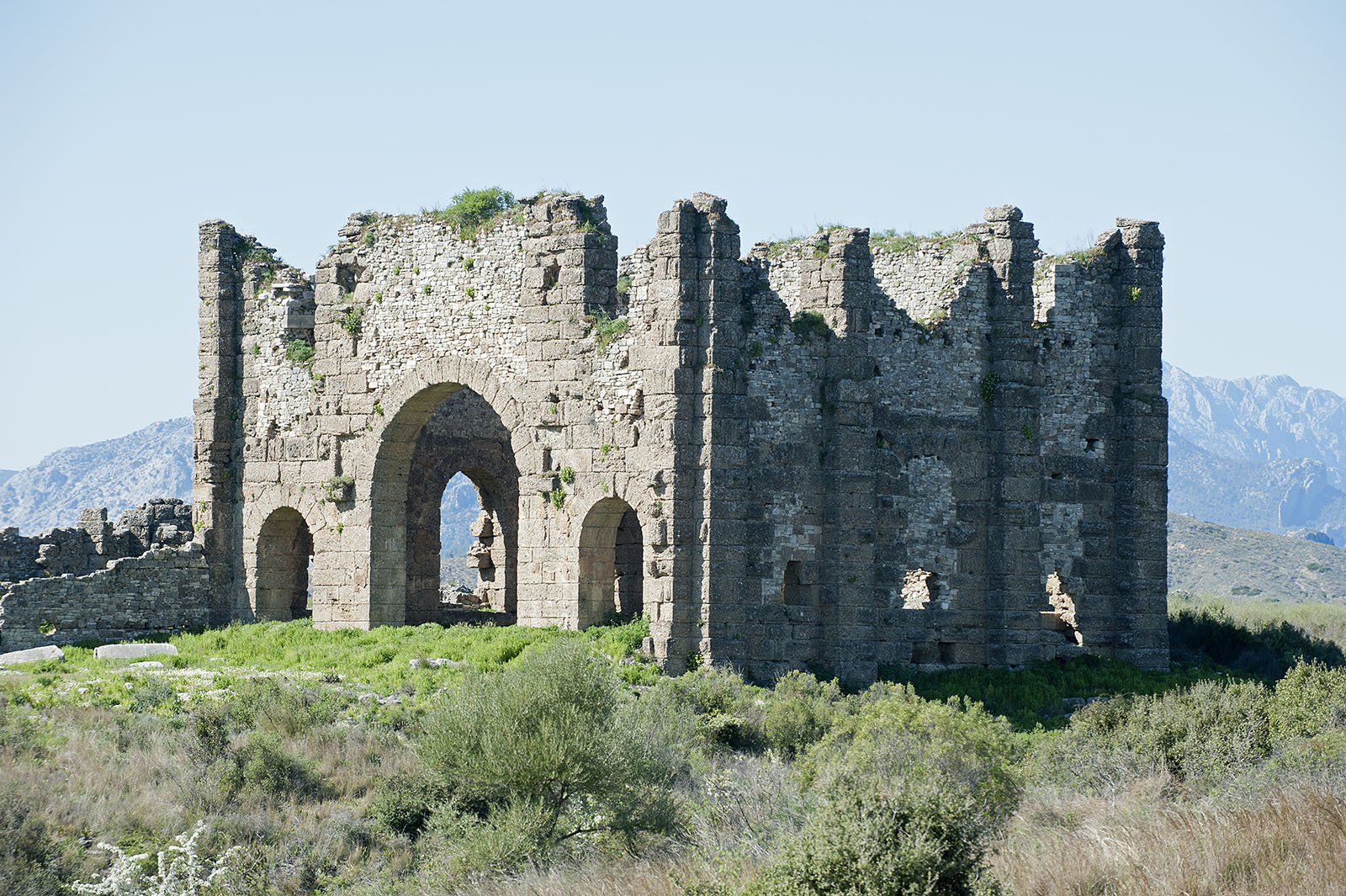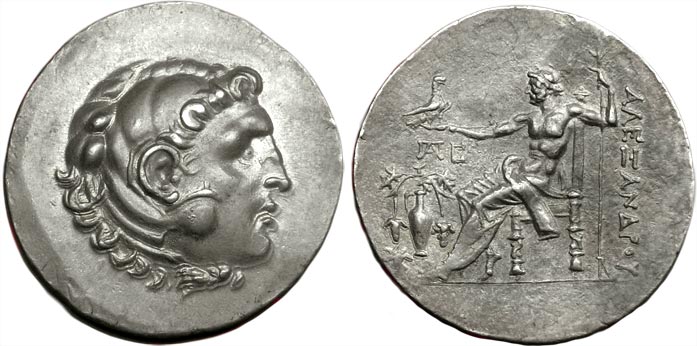|
Stater
The stater (; ) was an ancient coin used in various regions of Greece. The term is also used for similar coins, imitating Greek staters, minted elsewhere in ancient Europe. History The stater, as a Greek silver currency, first as ingots, and later as coins, circulated from the 8th century BC to AD 50. The earliest known stamped stater (having the mark of some authority in the form of a picture or words) is an electrum turtle coin, struck at Aegina that dates to about 650 BC. It is on display at the Bibliothèque Nationale in Paris. According to Robin Lane Fox, the stater as a weight unit was borrowed by the Euboean stater weighing from the Phoenician shekel, which had about the same weight as a stater () and was also one fiftieth of a mina.Lane Fox, Robin. ''Travelling Heroes: Greeks and Their Myths in the Epic Age of Homer''. P. 94. London: Allen Lane, 2008. The silver stater minted at CorinthSmith, William. ''A Dictionary of Greek and Roman Antiquitie ... [...More Info...] [...Related Items...] OR: [Wikipedia] [Google] [Baidu] |
Electrum
Electrum is a naturally occurring alloy of gold and silver, with trace amounts of copper and other metals. Its color ranges from pale to bright yellow, depending on the proportions of gold and silver. It has been produced artificially and is also known as "Colored gold#Green gold, green gold".Emsley, John (2003Nature's building blocks: an A–Z guide to the elements Oxford University Press. p. 168. . Electrum was used as early as the third millennium BC in the Old Kingdom of Egypt, sometimes as an exterior coating to the pyramidion, pyramidia atop ancient Egyptian pyramids and obelisks. It was also used in the making of ancient Beaker (archaeology) , drinking vessels. The first known metal coins made were of electrum, dating back to the end of the 7th century or the beginning of the 6th century BC. Etymology The name ''electrum'' is the Latinized form of the Greek language, Greek word ἤλεκτρον (''ḗlektron''), mentioned in the ''Odyssey'', referring to a metallic s ... [...More Info...] [...Related Items...] OR: [Wikipedia] [Google] [Baidu] |
Aegina
Aegina (; ; ) is one of the Saronic Islands of Greece in the Saronic Gulf, from Athens. Tradition derives the name from Aegina (mythology), Aegina, the mother of the mythological hero Aeacus, who was born on the island and became its king. Administration Municipality The municipality of Aegina consists of the island of Aegina and a few offshore islets. It is part of the Islands (regional unit), Islands regional unit, Attica (region), Attica region. The municipality is subdivided into the following five communities (population in 2021 in parentheses): * Aegina (6,976) * Kypseli (2,166) * Mesagros (1,473) * Perdika (847) * Vathy (1,449) The regional capital is the town of Aegina, situated at the northwestern end of the island. Due to its proximity to Athens, it is a popular vacation place during the summer months, with quite a few Athenians owning second houses on the island. The buildings of the island are examples of Neoclassical architecture with a strong folk element, bu ... [...More Info...] [...Related Items...] OR: [Wikipedia] [Google] [Baidu] |
Ancient Drachma
In ancient Greece, the drachma (, ; Grammatical number, pl. drachmae or drachmas) was an ancient currency unit issued by many city-states during a period of ten centuries, from the Archaic Greece, Archaic period throughout the Classical Greece, Classical period, the Hellenistic period up to the Roman period. The ancient drachma originated in Greece around the 6th century BC. The coin, usually made of silver or sometimes gold had its origins in a bartering system that referred to a drachma as a handful of wooden spits or arrows. The drachma was unique to each city state that minted them, and were sometimes circulated all over the Mediterranean. The coinage of Classical Athens, Athens was considered to be the strongest and became the most popular. Origins The name ''drachma'' is derived from the verb (, "(I) grasp"). It is believed that the same word with the meaning of "handful" or "handle" is found in Linear B tablets of the Mycenaean Greece, Mycenean Pylos. Initially a dra ... [...More Info...] [...Related Items...] OR: [Wikipedia] [Google] [Baidu] |
Lampsacus
Lampsacus (; ) was an ancient Greece, ancient Greek city located in modern day Turkey, strategically situated on the eastern side of the Hellespont in the northern Troad. An inhabitant of Lampsacus was called a Lampsacene. The name has been transmitted in the nearby modern town of Lapseki. Ancient history Originally known as Pityusa or Pityussa (), it was colonized from Phocaea and Miletus. In the 6th century BC Lampsacus was attacked by Miltiades the Elder and Stesagoras, the Athenian tyrants of the nearby Thracian Chersonese. During the 6th and 5th centuries BC, Lampsacus was successively dominated by Lydia, Persian Empire, Persia, Athens, and Sparta. The Greek tyrants Hippoclus and later his son Acantides ruled under Darius I. Artaxerxes I assigned it to Themistocles with the expectation that the city supply the Persian king with its famous wine. When Lampsacus joined the Delian League after the battle of Mycale (479 BC), it paid a tribute of twelve Talent (weight), talents, a ... [...More Info...] [...Related Items...] OR: [Wikipedia] [Google] [Baidu] |
Apollo
Apollo is one of the Twelve Olympians, Olympian deities in Ancient Greek religion, ancient Greek and Ancient Roman religion, Roman religion and Greek mythology, Greek and Roman mythology. Apollo has been recognized as a god of archery, music and dance, truth and prophecy, healing and diseases, the Sun and light, poetry, and more. One of the most important and complex of the Greek gods, he is the son of Zeus and Leto, and the twin brother of Artemis, goddess of the hunt. He is considered to be the most beautiful god and is represented as the ideal of the ''kouros'' (ephebe, or a beardless, athletic youth). Apollo is known in Greek-influenced Etruscan mythology as ''Apulu''. As the patron deity of Delphi (''Apollo Pythios''), Apollo is an oracular god—the prophetic deity of the Pythia, Delphic Oracle and also the deity of ritual purification. His oracles were often consulted for guidance in various matters. He was in general seen as the god who affords help and wards off e ... [...More Info...] [...Related Items...] OR: [Wikipedia] [Google] [Baidu] |
Aspendos
Aspendos or Aspendus ( Pamphylian: ΕΣΤϜΕΔΥΣ; Attic: Ἄσπενδος) was an ancient Greco-Roman city in Antalya province of Turkey. The site is located 40 km east of the modern city of Antalya. It was situated on the Eurymedon River about 16 km inland from the Mediterranean Sea; it shared a border with, and was hostile to, the ancient city of Side. History The wide range of its coinage throughout the ancient world indicates that, in the 5th century BC, Aspendos had become the most important city in Pamphylia. At that time, according to Thucydides, the Eurymedon River was navigable as far as Aspendos, and the city derived great wealth from a trade in salt, oil and wool. Aspendos did not play an important role in antiquity as a political force. Its political history during the colonisation period corresponded to the currents of the Pamphylian region. Within this trend, after the colonial period, it remained for a time under Lycian hegemony. In 546 BC ... [...More Info...] [...Related Items...] OR: [Wikipedia] [Google] [Baidu] |
Koppa (letter)
Koppa or qoppa (; as a modern numeral sign: ) is a letter that was used in early forms of the Greek alphabet, derived from Phoenician qoph (). It was originally used to denote the sound, but dropped out of use as an alphabetic character and replaced by Kappa (Κ). It has remained in use as a numeral symbol (90) in the system of Greek numerals, although with a modified shape. Koppa is the source of Latin Q, as well as the Cyrillic numeral sign of the same name ( Koppa). Alphabetic In Phoenician, qoph was pronounced ; in Greek, which lacked such a sound, it was instead used for before back vowels Ο, Υ and Ω. In this function, it was borrowed into the Italic alphabets and ultimately into Latin. However, as the sound had two redundant spellings, koppa was eventually replaced by kappa (Κ) in Greek. It remained in use as a letter in some Doric regions into the 5th century BC. The koppa was used as a symbol for the city of Corinth, which was originally spelled in ... [...More Info...] [...Related Items...] OR: [Wikipedia] [Google] [Baidu] |
Tetradrachm
The tetradrachm () was a large silver coin that originated in Ancient Greece. It was nominally equivalent to four drachmae. Over time the tetradrachm effectively became the standard coin of the Antiquity, spreading well beyond the borders of the Greek World. As a result, tetradrachms were minted in vast quantities by various polities in many weight and fineness standards, though the Athens-derived ''Attic standard'' of about 17.2 grams was the most common. Because of their large size, tetradrachms were often used by various states or rulers to advertise themselves or to deliver political messages. Popularity of the tetradrachm outlived the political independence of the Greeks and it remained in wide circulation in the Mediterranean up until Crisis of the Third Century, while debased varieties persisted in India and Central Asia into early Middle Ages. Due to their often high artistic level tetradrachms are eagerly collected in modern times, and well-preserved or rare specimen ... [...More Info...] [...Related Items...] OR: [Wikipedia] [Google] [Baidu] |
Phaistos
Phaistos (, ; Ancient Greek: , , Linear B: ''Pa-i-to''; Linear A: ''Pa-i-to''), also Transliteration, transliterated as Phaestos, Festos and Latin Phaestus, is a Bronze Age archaeological site at modern Faistos, a municipality in south central Crete. It is notable for the remains of a Minoan palace and the surrounding town. Ancient Phaistos was located about east of the Mediterranean Sea and south of Heraklion. Phaistos was one of the largest cities of Minoan Crete. The name Phaistos survives from Ancient Greece, ancient Greek references to a city on Crete of that name at or near the current ruins. History Bronze Age Phaistos was first inhabited around 3600 BCE, slightly later than other early sites such as Knossos. During the Early Minoan period, the site's hills were Terrace (building), terraced and monumental buildings were constructed on them. Like other large Minoan cities, there was a palace that was built in an area that had been used earlier for communal feastin ... [...More Info...] [...Related Items...] OR: [Wikipedia] [Google] [Baidu] |
Knossos
Knossos (; , ; Linear B: ''Ko-no-so'') is a Bronze Age archaeological site in Crete. The site was a major centre of the Minoan civilization and is known for its association with the Greek myth of Theseus and the minotaur. It is located on the outskirts of Heraklion, and remains a popular tourist destination. Knossos is considered by many to be the oldest city in Europe. Knossos is dominated by the monumental Palace of Minos. Like other Minoan palaces, this complex of buildings served as a combination religious and administrative centre rather than a royal residence. The earliest parts of the palace were built around 1900 BC in an area that had been used for ritual feasting since the Neolithic. The palace was continually renovated and expanded over the next five centuries until its final destruction around 1350 BC. The site was first excavated by Minos Kalokairinos in 1877. In 1900, Arthur Evans, Sir Arthur Evans undertook more extensive excavations which unearthed most of th ... [...More Info...] [...Related Items...] OR: [Wikipedia] [Google] [Baidu] |
Kydonia
Kydonia ( or ), also known as Cydonia (, ''Kydōnía'') was an ancient city located at the site of present-day Chania near the west end of the island of Crete in Greece. The city is known from archaeological remains dating back to the Minoan era as well as literary and historical sources. History In the area of Kastelli Hill, which is the citadel of Chania's harbor, archaeological excavations have discovered ceramic sherds and finds that date from the Neolithic to Late Minoan IIIC. Early Bronze Scarce finds such as walls and ground floors confirm that the systematic habitation of the hill began during Early Minoan (EM) II period. Middle Bronze In the Middle Bronze Age, the material culture on Crete is known as Middle Minoan (MM). Late Pre-Palatial Period In the MM IA (c. 2050/2000-1925/1900 BC), the architecture was still pre-palatial. These levels were destroyed with the construction of the neopalatial town. Neo-Palatial Period In the Middle Minoan III (MM III; c. ... [...More Info...] [...Related Items...] OR: [Wikipedia] [Google] [Baidu] |
Corinth
Corinth ( ; , ) is a municipality in Corinthia in Greece. The successor to the ancient Corinth, ancient city of Corinth, it is a former municipality in Corinthia, Peloponnese (region), Peloponnese, which is located in south-central Greece. Since the 2011 local government reform, it has been part of the Corinth (municipality), municipality of Corinth, of which it is the seat and a municipal unit. It is the capital of Corinthia. It was founded as Nea Korinthos (), or New Corinth, in 1858 after an earthquake destroyed the existing settlement of Corinth, which had developed in and around the site of the ancient city. History Corinth derives its name from Ancient Corinth, a city-state of antiquity. The site was occupied from before 3000 BC. Ancient Greece Historical references begin with the early 8th century BC, when ancient Corinth began to develop as a commercial center. Between the 8th and 7th centuries, the Bacchiad family ruled Corinth. Cypselus overthrew the Bacchiad f ... [...More Info...] [...Related Items...] OR: [Wikipedia] [Google] [Baidu] |









